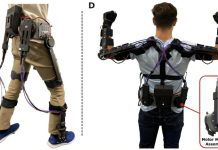
Australian engineers have made a groundbreaking invention: an ultrasonic cold brew coffee machine that can create a high-quality cold brew coffee in less than three minutes.
This exciting development, led by researchers from The University of Queensland (UQ) and the University of New South Wales (UNSW), highlights Australia’s role as a leader in modern coffee innovation.
Traditionally, making cold brew coffee takes 12 to 24 hours.
However, engineers from UNSW have found a way to speed up this process significantly.
They developed an ultrasonic machine that uses sound waves to brew coffee much faster.
This invention was described in the journal Ultrasonics Sonochemistry.
Dr. Jaqueline Moura Nadolny, a postdoctoral researcher from UQ, explained that their team tested this new cold brew coffee and found that it meets the high standards of cold brew enthusiasts. Fans of cold brew coffee love its smooth, less acidic, and less bitter taste.
According to Dr. Nadolny, the new technology provides a similar taste profile to traditional cold brew or espresso, but in just a few minutes.
The UNSW team, led by Dr. Francisco Trujillo, created the machine by adding their patented sound transmission system to an existing coffee machine model.
This system includes a bolt-clamped transducer connected to the brewing basket via a metallic horn, turning the coffee basket into a powerful ultrasonic reactor.
Dr. Trujillo explained that this ultrasound process speeds up the extraction of oils, flavors, and aroma from the ground coffee.
Dr. Trujillo is enthusiastic about the technology’s potential. “We’re able to demonstrate that this can be adapted to an existing espresso machine,” he said.
“We are very excited about developing this technology, which can be used by companies that already manufacture coffee machines. This means consumers will be able to enjoy a 3-minute ultrasonic cold brew at home.”
This innovation also benefits coffee shops and restaurants. They can produce on-demand brews comparable to 24-hour cold brews without needing large brewing units and extensive refrigeration space.
UQ sensory scientist and flavor chemist Professor Heather Smyth noted that this method could enhance Australia’s reputation as a coffee-loving nation.
“We have some of the best brewers in the world, and here we have another Australian invention that delivers premium coffee experiences in an innovative way,” she said.
Professor Smyth also mentioned that future work could explore different types of beans from various regions. For companies or cafes specializing in single-origin or high-quality beans, this technology could offer a new way to showcase the unique flavors of their coffee.
This new ultrasonic cold brew machine represents a significant step forward in coffee brewing technology, promising to deliver high-quality cold brew coffee quickly and efficiently.



